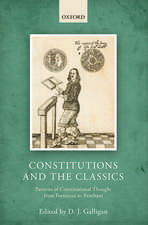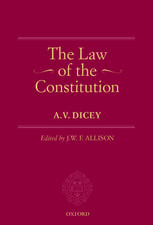Designing Federalism: A Theory of Self-Sustainable Federal Institutions
Autor Mikhail Filippov, Peter C. Ordeshook, Olga Shvetsovaen Limba Engleză Paperback – 8 feb 2004
| Toate formatele și edițiile | Preț | Express |
|---|---|---|
| Paperback (1) | 284.87 lei 6-8 săpt. | |
| Cambridge University Press – 8 feb 2004 | 284.87 lei 6-8 săpt. | |
| Hardback (1) | 453.77 lei 6-8 săpt. | |
| Cambridge University Press – 11 ian 2004 | 453.77 lei 6-8 săpt. |
Preț: 284.87 lei
Nou
Puncte Express: 427
Preț estimativ în valută:
54.51€ • 56.80$ • 45.13£
54.51€ • 56.80$ • 45.13£
Carte tipărită la comandă
Livrare economică 03-17 aprilie
Preluare comenzi: 021 569.72.76
Specificații
ISBN-13: 9780521016483
ISBN-10: 0521016487
Pagini: 398
Ilustrații: 10 b/w illus. 17 tables
Dimensiuni: 151 x 228 x 26 mm
Greutate: 0.53 kg
Ediția:New.
Editura: Cambridge University Press
Colecția Cambridge University Press
Locul publicării:New York, United States
ISBN-10: 0521016487
Pagini: 398
Ilustrații: 10 b/w illus. 17 tables
Dimensiuni: 151 x 228 x 26 mm
Greutate: 0.53 kg
Ediția:New.
Editura: Cambridge University Press
Colecția Cambridge University Press
Locul publicării:New York, United States
Cuprins
1. Federations and the theoretical problem: 1.1 Why Federalism; 1.2 Definitions; 1.3 The long search for stability; Federalism as nuisance; Federalism as engine of prosperity; Riker as intermediary; 1.4 The fundamental problem of stability; 1.5 Basic premises and conclusions; 2. Federal bargaining: 2.1 Alliances versus federations; 2.2 The private character of public goods; 2.3 Equilibrium selection and redistribution; 2.4 The 'federal problem'; 2.5 Bargaining for control of the center; 2.6 Allocating jurisdictions; 2.7 Three levels of institutional design; 3. Two cases of uninstitutionalized bargaining: 3.1 The Czechoslovak dissolution; 3.2 The Soviet dissolution; 3.3 The feasibility of success in initial bargaining; 3.4 Secession: the special road to renegotiation; 4. Representation: 4.1 Two alternative models of Federalism; 4.2 A national venue for bargaining; 4.3 Within versus without; 4.4 Direct versus delegated representation; 4.5 Other parameters of design; 4.6 Bilateral decision making and the case of Russia; 5. Incentives: 5.1 Institutional enforcement; 5.2 The court; 5.3 Some simple rules of constitutional design; 5.4 Voters versus elites; 5.5 Desirable imperfection and a democratic as if principle; 6. Political parties in a federal state: 6.1 An extreme hypothesis; 6.2 Parties in a democracy; 6.3 The idealized party system; 6.4 Integrated parties; 6.5 Integration outside the United States; Australian Federalism and the role of parties; Canada; 6.6 India; Leadership incentives; Rank and file incentives; The party and Federalism; 1967 and thereafter; 7. Institutional sources of federal stability I: 7.1 Introduction; 7.2 Level 2 and the federalist; 7.3 Level 3 institutions; 7.4 Australia, Canada, Germany, and India revisited; Germany; Canada; Canada vs Australia and India; 7.3 Local and regional design parameters; 8. Institutional sources of federal stability II: 8.1 Electoral mechanisms and societal structures; Representation; Ethnicity; Defining federal subjects; Number of local jurisdictions; Authority over local governments; 8.2 Bicameralism; Symmetry; Presidential authority; Presidential selection; Electoral connections; 8.3 Level 1 and the scope of the federal mandate; 8.4 Level 0 - things beyond design; 9. Designing Federalism: 9.1 Russia; Electoral arrangements; Regional autonomy; Constitutional matters; Parties and the current status quo; 9.2 The European Union; Background; The role of parties; The puzzle of the collusion; France versus Britain; EU institutional design; 9.4 Conclusion.
Descriere
This book argues that a number of institutional variables can be critical in determining federal success.















